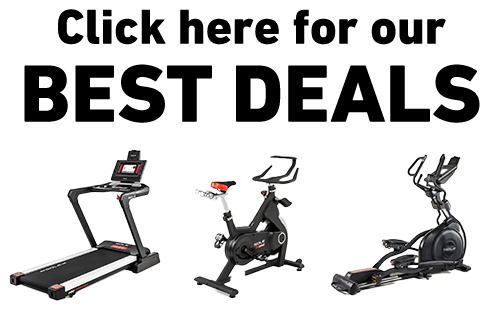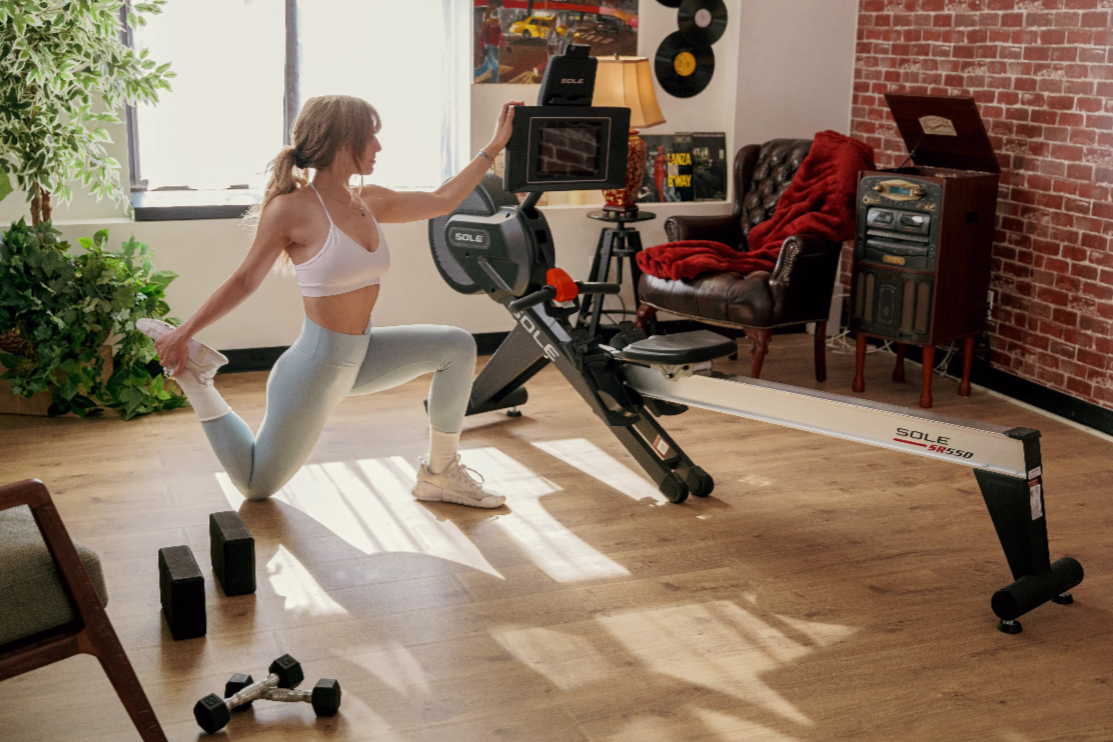Key Takeaways
- Walking 10,000 steps on a treadmill typically requires 90 to 120 minutes at moderate pace (3–4 mph), making it an achievable daily fitness goal for most individuals regardless of weather conditions or time constraints.
- Multiple factors influence completion time including personal stride length, treadmill speed settings, incline levels, and individual fitness level, allowing for customizable workout experiences that match your capabilities and goals.
- Achieving 10,000 daily steps provides comprehensive health benefits including improved cardiovascular health, enhanced weight management, better mental wellness through endorphin release, and stronger bone and joint health over time.
- SOLE Fitness's award-winning treadmill lineup, featuring advanced cushioning technology, powerful quiet motors, and comprehensive tracking capabilities, provides the ideal platform for consistently achieving your 10,000-step daily goals with comfort and precision.
How Long Does It Take to Walk 10k Steps On a Treadmill?
Walking 10,000 steps a day is a common goal for better health. While it might seem tough, using a treadmill can make it easier. Let's look at how long it usually takes to walk 10,000 steps on a treadmill, what can affect this time, and tips to help you reach your daily goal.
Walking 10,000 steps a day helps manage weight and keeps your mood lifted.
Walking Speed & Time
How long it takes to walk 10,000 steps depends on your speed. Understanding the relationship between pace and duration helps you plan effective workout sessions that fit your schedule and fitness objectives.
At a pace of 3–4 mph, it usually takes 90 to 120 minutes. Find a speed that feels right for you and make it a habit:
- 3 mph: About 120 minutes
- 4 mph: About 90 minutes
What Affects Time?
Several factors can change how long it takes to reach 10,000 steps on a treadmill, and understanding these variables allows you to optimize your workout for maximum efficiency:
- Stride Length: Longer strides mean fewer steps; shorter strides need more steps.
- Treadmill Speed: Walking faster gets you to your goal faster; slower speeds take more time.
- Incline: Walking uphill slows you down but makes the workout tougher.
Break up your walk into shorter sessions and watch the steps add up throughout the day.
Health Benefits of 10,000 Steps
Regular achievement of 10,000 daily steps provides comprehensive health improvements that extend far beyond basic fitness metrics:
- Heart Health: Walking strengthens your heart and improves circulation.
- Weight Management: It helps burn calories, which can aid in weight control.
- Mental Health: Walking releases endorphins, which reduce stress and lift mood.
- Bone & Joint Health: It strengthens bones and keeps joints flexible.
|
Award-Winning Commercial-Grade Treadmills for Your Home Choose from 3 Proven Series:
Why Choose SOLE: ✓ Commercial-grade steel frames with up to 4.0 HP motors 30-Day Money-Back Guarantee: Love it or return it, no questions asked. |
Advanced Strategies for Achieving 10,000 Steps Efficiently
Interval Walking Programs
Alternating between different speeds creates more engaging workouts while potentially reducing overall time commitment.
Try walking at 4 mph for 5 minutes, then 3 mph for 3 minutes, repeating this cycle. This variation prevents boredom and can improve cardiovascular conditioning more effectively than steady-state walking.
Progressive Incline Training
Gradually increasing incline throughout your session adds intensity without requiring higher speeds.
Start flat, increase to 2% incline after 20 minutes, then 4% after 40 minutes. This approach burns more calories per step while building lower body strength.
Split Session Strategy
Dividing your 10,000 steps into multiple sessions throughout the day can be more manageable and sustainable.
Consider three 30–40 minute sessions: morning (3,500 steps), lunch (3,000 steps), and evening (3,500 steps). This approach maintains energy levels and prevents workout fatigue.
Technology Integration
Modern treadmills offer features that enhance step tracking accuracy and motivation. Heart rate monitoring ensures you maintain optimal intensity, while pre-programmed workouts provide structure and variety.
Entertainment options like streaming capabilities make longer sessions more enjoyable.
Achieve Your Daily Step Goals with SOLE's Precision Engineering
SOLE Fitness has been revolutionizing home fitness since our inception.
At SOLE Fitness, our commitment to durability and performance now powers every treadmill we make, ensuring your 10,000-step journey is supported by equipment that won't let you down.
Our treadmill technology transforms step achievement from challenging to enjoyable through advanced cushioning that reduces joint impact, whisper-quiet motors that won't disturb others, and precise tracking that celebrates every step toward your goal.
Regardless if you choose our beginner-friendly F63 or our premium F89 with its 21.5" touchscreen, you're investing in equipment designed to make 10,000 daily steps an achievable, sustainable habit.
Combined with our complimentary curbside shipping, 30-day trial period, and access to thousands of FREE SOLE+ app workouts, your success is our guarantee. Make every step count—choose SOLE for your 10,000-step journey.
Check out our treadmills today!
Frequently Asked Questions (FAQ)
How long does it actually take to walk 10,000 steps on a treadmill?
Walking 10,000 steps on a treadmill typically takes 90–120 minutes depending on your walking speed and stride length.
At 3 mph (moderate pace), expect about 120 minutes, while 4 mph reduces the time to approximately 90 minutes. Factors like incline settings, rest breaks, and individual stride variations can affect these timeframes.
For most people, planning 90–120 minutes ensures adequate time to comfortably achieve the goal without rushing.
Does incline affect the time to reach 10,000 steps?
Yes, walking on an incline typically increases the time needed to reach 10,000 steps because the increased difficulty naturally slows your pace.
However, incline walking burns significantly more calories per step and provides greater muscle engagement, making your workout more efficient overall.
A 5% incline might add 10–20 minutes to your total time but can increase calorie burn by 30–40% compared to flat walking.
Can I split my 10,000 steps throughout the day on a treadmill?
Absolutely! Breaking your 10,000 steps into multiple treadmill sessions is often more manageable and sustainable than completing them in one continuous workout.
Consider three sessions: 3,000–4,000 steps in the morning (30–40 minutes), 3,000 steps at lunch (30 minutes), and 3,000–4,000 steps in the evening (30–40 minutes).
This approach prevents fatigue, maintains energy levels, and fits better into busy schedules.
What's the difference between outdoor walking and treadmill walking for step counting?
Treadmill walking provides more accurate step counting through built-in sensors and consistent pacing, while outdoor walking can vary due to terrain changes, weather conditions, and pace fluctuations.
Treadmills offer precise speed control, making it easier to maintain consistent step rates and predict completion times.
Additionally, treadmill walking eliminates external variables like traffic stops, hills, or weather that can disrupt outdoor walking routines and affect step accuracy.
Which SOLE treadmill is best for achieving daily 10,000-step goals?
SOLE Fitness offers several excellent options for walking: The F63 is perfect for beginners with its 6.5" display and essential tracking features. The F80 suits intermediate users with its 10.1" touchscreen and advanced programs.
For serious walkers, the F85 provides a 15.6" touchscreen, enhanced cushioning, and premium features.
All SOLE treadmills include step tracking, multiple speed options, and our signature quiet operation, making any model excellent for consistent 10,000-step achievement in your home environment.



Leave a comment
This site is protected by hCaptcha and the hCaptcha Privacy Policy and Terms of Service apply.